Green or Greenwashed: How Retail Can Combat Misleading Claims
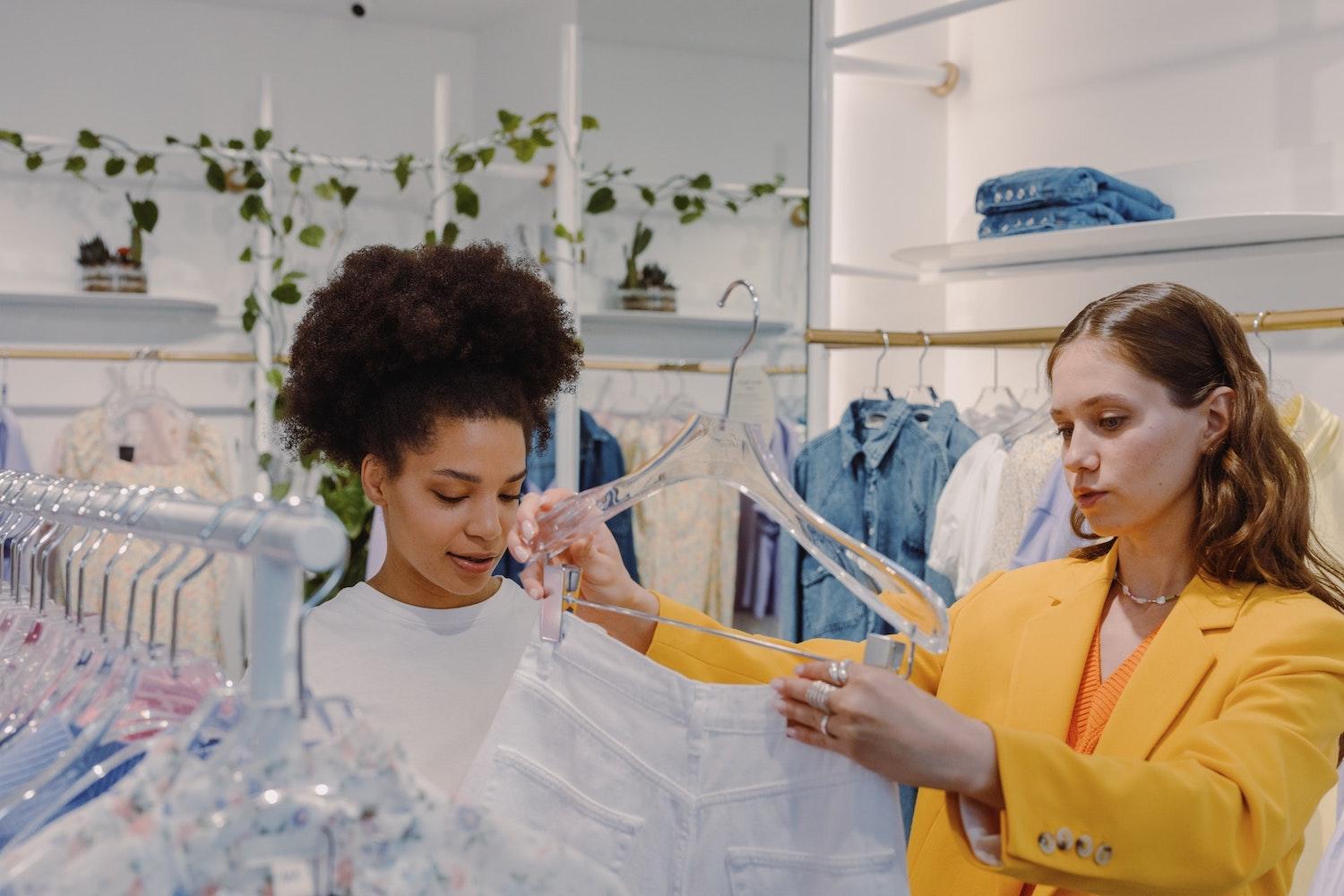

Greenwashing, where companies make false or misleading claims about a product’s environmental benefits in a bid to appeal to eco-conscious consumers, is plaguing the retail industry. This problem not only leads to a breakdown of consumer trust, but it also threatens the future potential for legitimate retail circularity and diminishes the value of brands with products that are truly sustainable.
Across the board, consumers are gravitating toward sustainability. The sustainable fashion industry, for example, is valued at $6.5 billion and is expected to hit $15 billion by 2030 – indicating how hungry consumers are for eco-conscious brands. Still, a recent KPMG survey found that while 75 percent of millennials are ready to change their buying habits in favor of environmentally-friendly products, only 26 percent actually trust brands’ environmental and sustainable claims. This is a direct consequence of brands using misleading labels, hiding the truth about production processes, or misrepresenting environmental standards and certifications.
Just a few recent cases of greenwashing that have made headlines include claiming products are 100 percent recycled when only pieces of the product are, marketing undergarments as safer alternatives to menstrual cycle products even though they contain harmful chemicals, and appointing a big-name celebrity “sustainability ambassador” with a well-documented, outsized carbon footprint.
Unearthing the root causes of greenwashing
In a rush to capitalize on sustainable trends, many retailers have been more focused on marketing the “right” message than actually walking the talk. No longer willing to take brand statements at face value, consumers and investigative journalists are now taking a more active role in uncovering greenwashing, but the process is harder than it sounds.
Validating marketing claims requires a level of contextually relevant and accurate product information, traceability, and supplier data-sharing that is largely unseen in retail supply chains today. Supply chains are complex, involving multiple suppliers, manufacturers and intermediaries, making it all the more difficult to trace products from origin to final destination. As a result, unscrupulous suppliers, who may not be transparent about their sustainability practices, sometimes slip through the cracks.
Finding that half of the environmental claims used to advertise products in the European Union are misleading or unfounded, the European Commission is preparing to introduce rules to prevent greenwashing. One method involves the use of digital product passports or profiles that contain pertinent information on the product’s material extraction, production and recycling processes, which can then be shared with the entire value chain. Other regulations center around extended producer responsibility, placing the onus on producers for their product’s end-of-life impact on the environment.
As ESG regulations continue to ramp up, companies will need to prioritize product traceability and consumer transparency or face significant reputational, financial, and potentially regulatory damages.
How technology can help consumer transparency flourish
With EPR (extended producer responsibility) and DPP (digital product passport) regulations in the pipeline, in addition to growing regulatory pressure to disclose or ban products that cause deforestation, building a product “profile” early in its lifecycle sets a critical foundation for persistent identification.
Once that digital passport has been established to underpin transparency and traceability, data carrier technologies such as radio frequency identification (RFID) and 2D barcodes, like a QR code, can be used in accordance with industry standards to take these regulatory initiatives a step further.
With their ability to convey and link to a broad range of data, RFID tags and 2D barcodes can be scanned at various points in the supply chain to provide real-time information to trading partners about a product’s origin, conditions during transport and supplier sustainability practices, including produced waste and the overall environmental impact of a product. This information can even be shared with consumers through mobile phone scans.
With an initiative called Sunrise 2027, facilitated by standards body GS1 US, the retail industry is aiming to achieve widespread acceptance of 2D barcodes at point of sale within the next four years. Some of world’s most iconic fashion brands including Burberry, Mulberry, Giorgio Armani and Stella McCartney have already begun adding QR codes to labels for better shopper engagement. By scanning the codes with their smartphones, consumers can learn how the product was made, where the materials came from, and whether or not it was sustainably created. They can also receive important care and repair information to extend the item’s life.
Patagonia is another one of the many forward-thinking brands already using this type of 2D barcode. Ninety-four percent of Patagonia’s product line is made from recycled materials. In lieu of sharing product information, care directions and community initiatives on hang tags, the company has added QR codes to its packaging that web-enables access to all of this rich data. This gives Patagonia customers a more personalized and localized experience, while reducing the amount of single-use tags. The change has enhanced the company's consumer engagement and allowed it to collect more data across all points of sale, better identify instances of counterfeiting, and reduce environmental impact.
Paving the road to circularity
Improved data quality, product traceability, and supply chain transparency are critical stepping stones on the path to circularity. In a truly circular economy, retailers will be able to redesign, reuse, repair, and recycle products instead of relying on virgin materials, thereby reducing waste and ensuring the continuity of finite resources.
If we can more accurately validate the claims made by retailers, we’ll have a better understanding of how far the industry has come with circularity and how much further we have to go. Businesses are taking critical steps, exploring ways to make recycling easier for consumers and reducing the amount of products that end up in our landfills. However, truly advancing sustainability depends on upholding the standards for data quality, traceability, and transparency that enable us to hold every supplier and retailer accountable for greenwashing.
Image credit: Ron Lach/Pexels
How AI-Powered Digital Twins Can Help Build Sustainable and Resilient Infrastructure
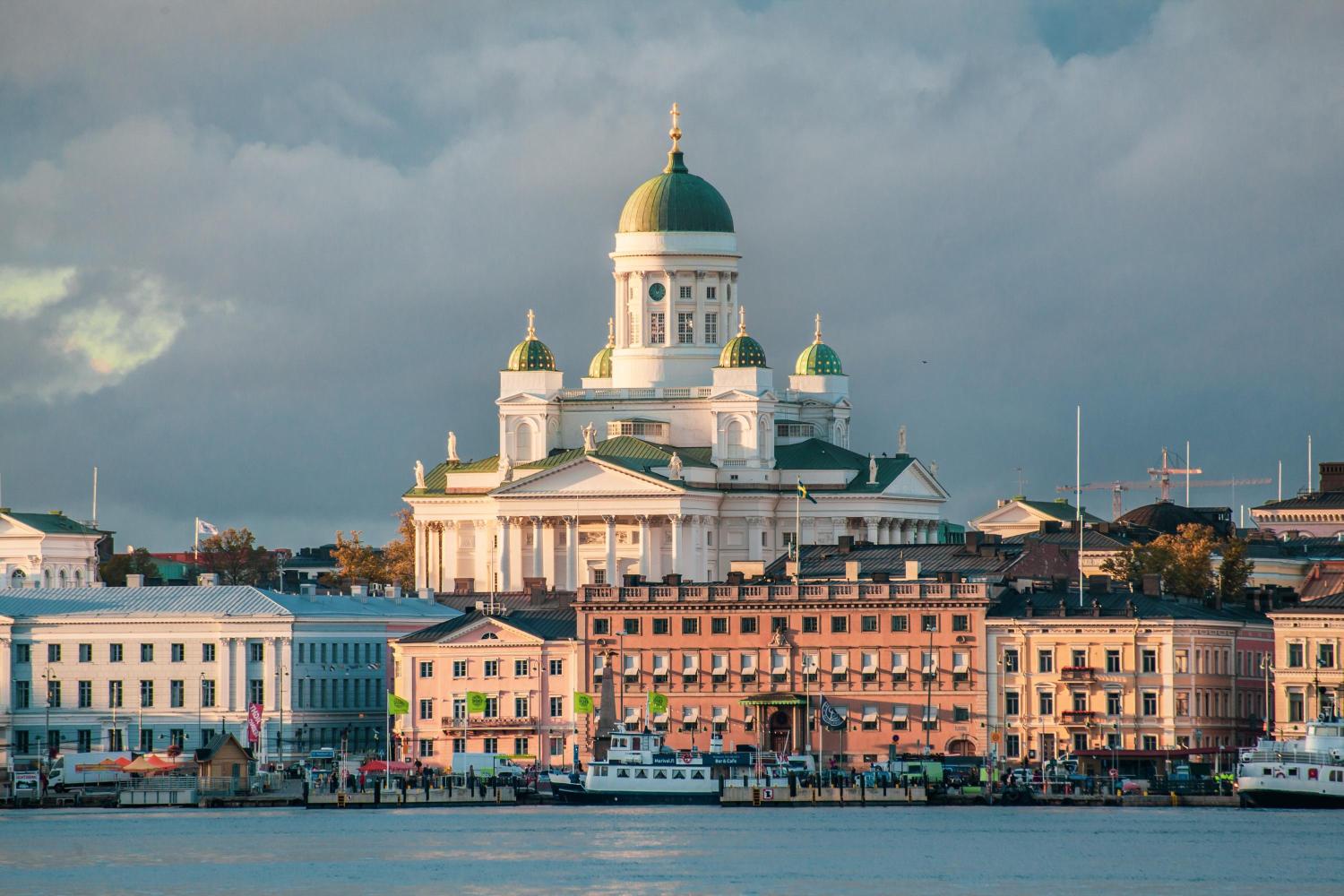
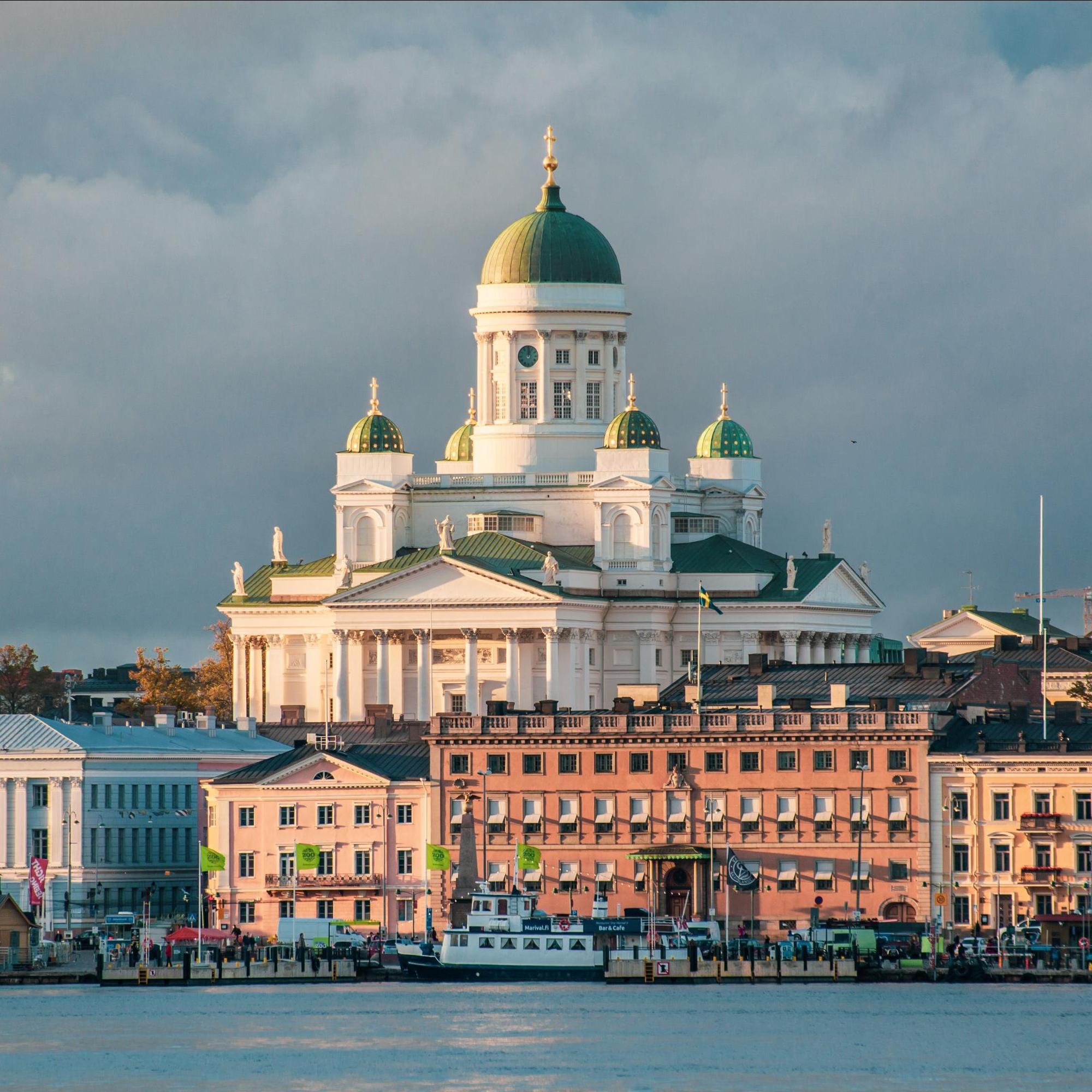
In Finland, the smart city of Helsinki is leveraging digital twins to make its central heating system more efficient.
In “The Art of Taking Action,” author Greg Krech wrote: “We are all depending on each other, as we weave our lives, families and communities together. So, when we do not carry our weight, the fabric gets a buckle in it.”
I like to think designing, building, and operating infrastructure plays a significant role in weaving our lives, families and communities together, as Krech said. With that, we carry the weight of advancing infrastructure for a more environmentally sustainable future.
As climate change continues to throw the world off balance, numbers show it is the designers, builders and owner-operators of infrastructure who need to lead the transition to low-carbon solutions, waste reduction and energy conservation.
Infrastructure “is responsible for 79 percent of total greenhouse gas emissions and 88 percent of all adaptation costs,” according to a 2021 report from the U.N. Office for Project Services (UNOPS).
No one can tackle these sustainability challenges alone. So, how do we work together in the quest to meet and exceed sustainability goals while we design, build, operate and maintain infrastructure?
Empowering action for sustainable infrastructure
In 2015, all U.N. member states adopted the 2030 Agenda for Sustainable Development with 17 sustainable development goals for humanity and the planet.
Using an infrastructure lens, we can zoom in on Goal 17 to empower organizations in their effort to design, build, operate and maintain infrastructure sustainably: “Strengthen the means of implementation and revitalize the global partnership for sustainable development.”
Empowering effective implementation and collaboration through partnerships requires a data-centric approach. Most data, while abundant, is typically siloed in different formats, multiple repositories and various disciplines across the supply chain. Using a data-centric approach removes these boundaries and provides open access to extract value for problem-solving.
Likewise, digital twins — virtual models of real-world objects or infrastructure — enable organizations to visualize and analyze data to make more informed decisions. This decision intelligence is proven to reduce waste and lower carbon emissions in the construction and operation of infrastructure, and even conserve energy and water.
From decision intelligence to sustainable solutions
In Finland, the smart city of Helsinki uses natural gas to power its central heating system. These systems work to warm individual buildings by transmitting heat from a central source through a network of insulated pipes. However, even with regular care, heating and water systems deteriorate with age, leading to leakage events that can cause service outages, energy inefficiencies and water insecurity.
Action 1: Optimize data and expertise: One of the largest grid operators in Finland, Savon Sähkö Oy, partnered with an artificial intelligence laboratory, Silo AI, to develop a data-driven asset optimization service for the citywide pipe networks using a data-centric approach. Silo AI, experienced in smart city solutions and networks, unified data from numerous systems into a single view of overall pipeline health.
Action 2: Let digital twins and AI do the work: The two organizations leaned heavily on digital twins and artificial intelligence to develop a single source of pipeline network data that owner-operators can use to improve operations and eliminate water leakages.
Silo AI brought together all the data, including information on heating supply, water supply, and pipeline age, type and condition. The organization then developed a method to analyze and visualize the data in an intuitive user interface, leveraging Bentley Systems’ iTwin Platform.
The AI-driven cooling performance analysis significantly improved energy efficiency and decreased fuel consumption, lowering the city’s heating network temperature by 3 degrees Celsius.
By prioritizing maintenance activities where leaks are likely to occur, the pipeline owner-operator also restricts water loss and prevents blockages and outages while reducing maintenance costs.
Action 3: Reuse and recycle: For most practical purposes, any data can be duplicated in a single digital twin, which becomes a kind of centralized data repository that is open to all and easily consumed in its native format.
Sustainability realized
Resolving Helsinki’s central heating system challenges started with a data-centric approach, weaving AI and digital twin technology into its infrastructure operations to bring energy savings and water security to residents. An open, accessible digital twin platform where the disparate data is collected in one place empowers third-party companies like Silo AI and its customers to achieve sustainable development goals for infrastructure.
This is a true example of the collaborative ecosystem needed to accelerate the Global Goals implementation. And one of many implementations effectively changing how we design, build and operate infrastructure to reduce our impact on the planet.
Intelligent change agents
Infrastructure professionals face the enormous task of sustainably adapting the fabric of our world. The good news is we can rely on the intelligence of digital twins to help carry the weight.
By embracing a data-centric and collaborative approach to problem-solving, we will enable an ecosystem of organizations that can advance infrastructure for a sustainable future.
The road ahead may be complicated, but experience shows us the most effective changes start with small steps. Using intelligent digital twins, we can work smarter and faster together to achieve these goals.
Image credit: Tapio Haaja/Unsplash
Winemakers on the Front Lines of Climate Change Say Sustainability is an Industry Imperative
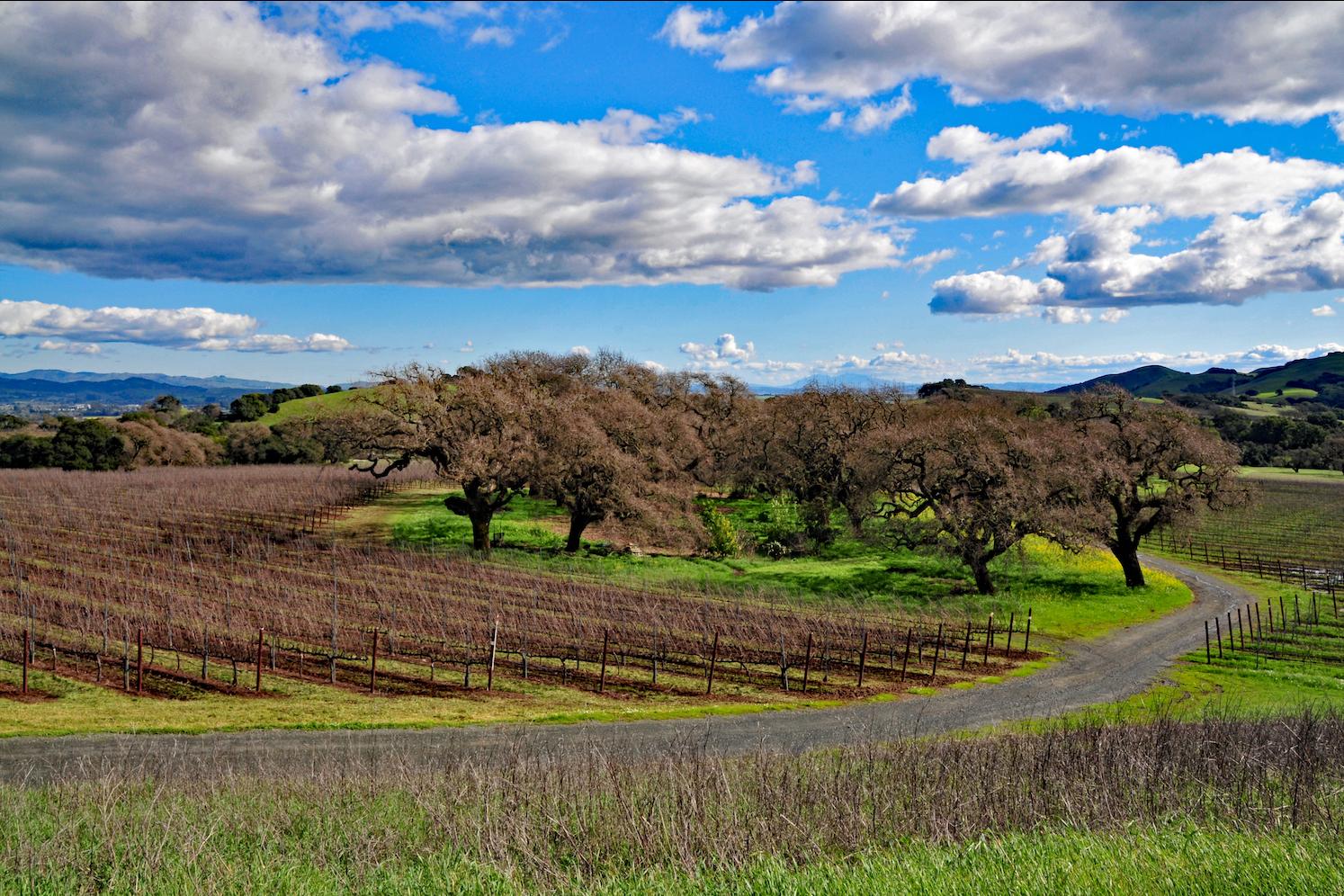
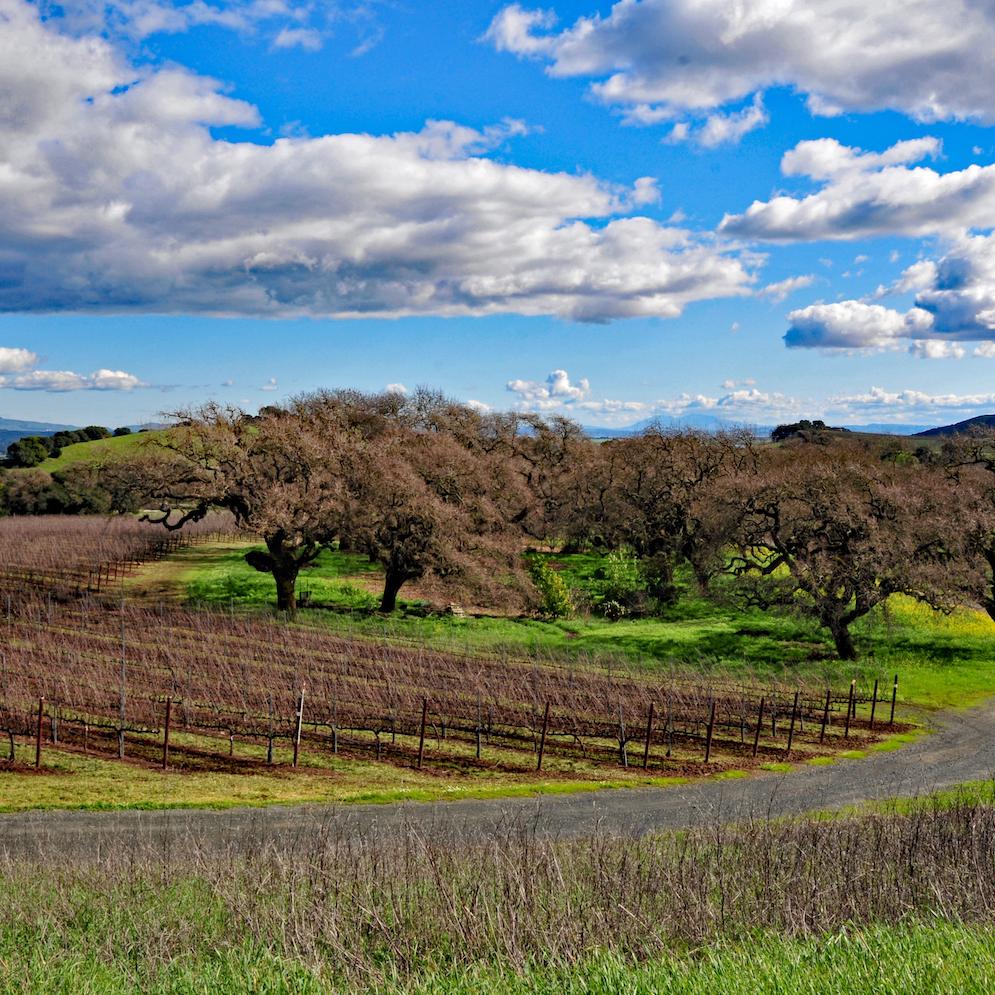
Grace Benoist Ranch in California's Napa Valley wine country, home to the vineyards of Treasury Wine Estates brand Etude.
The wine industry is no stranger to climate change. Vineyards have been facing the brunt of it for decades. It hasn’t been all bad either, as warming has opened up new growing regions. But vignerons, or grape growers, in traditional areas have also been forced to innovate and adapt ahead of other agricultural producers.
Fortunately, many in the industry appear to be embracing sustainability and innovation to keep the vino flowing. TriplePundit spoke with Will Drayton, director of technical viticulture, sustainability and research at Treasury Americas, a division of Treasury Wine Estates, about the challenges facing the industry and what the company’s brands are doing to meet them.
“We notice climate change within a planting cycle”
“The wine industry is in a really good spot to pay attention to climate change," Drayton said. "We’re really well attuned to all of those changes because of how they can affect every aspect of winemaking. It’s an inherent advantage of wineries in general that we’re really dialed into what’s happening, As we grow our fruit, we tend to gather a lot of information, so we have a ton of data. We notice climate change within a planting cycle.”
Because wine takes years to produce, the industry has to plan and adapt accordingly. “We have to make sure to look at the long term,” he explained. That could mean planting new and different varieties to withstand the likelihood of heatwaves, wildfires, and other weather events that lower yields and drastically alter the quality of the fruit.
“In California, if you look at rainfall that’s coming, it’s not predicted to change overall. Generally, things are flat as far as the amount, but the pattern of when it rains is changing,” Drayton said, referring to the extreme weather effects as climate whiplash. “As a result, we have to change how we plant, how we store water. We have to change expectations.”
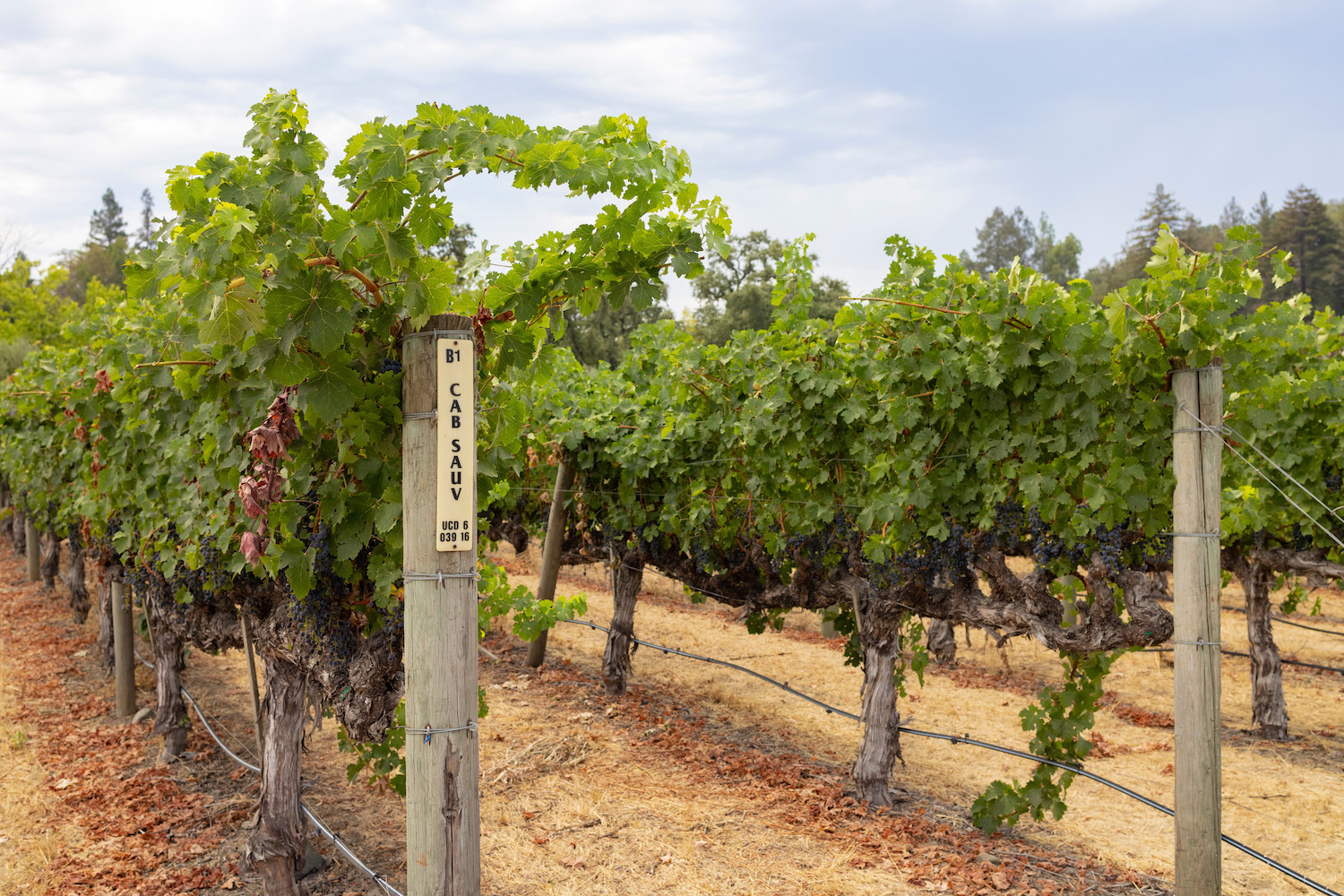
Adaptation is the name of the game
All of these changes beg the question: Can regions known for particular styles of wine continue to grow the same fruit, or will different varieties have to be considered? Both scenarios are playing out.
“First, how much can we adapt in place? Can we continue to grow the same varieties?," Drayton asked rhetorically as an example. Adapting in place could mean introducing irrigation — something that has previously not been necessary for a lot of viticulture — as well as raising vines higher off the ground and using more canopy to protect the grapes from heatwaves. Still, “less heat-resistant varieties are not doing as well as they used to,” Drayton explained.
That means new varieties are moving into old regions. For California's Napa Valley wine region — where Treasury Wine Estates is a major producer — the result is that cabernet is being planted in cooler areas in the south, while Bordeaux is becoming more successful in its warmer areas. It can be trickier in other regions, however. Growers are limited as to what varieties they are allowed to utilize in places like the Bordeaux region of France, for example, where appellation authorities control what types of grapes can be planted and used for wine.
“There are a huge number of varieties that we don’t take advantage of,” Drayton told 3p. He mentioned varieties from southern European countries like Spain and Portugal as having the potential to produce well in Napa as it warms.
Meanwhile, wine drinkers aren’t enjoying the same styles they were even 100 years ago as the industry and what it offers is constantly changing. Drayton is confident they will embrace further changes. “I’ve got a lot of faith that the consumer will adapt and the industry will adapt,” he said.
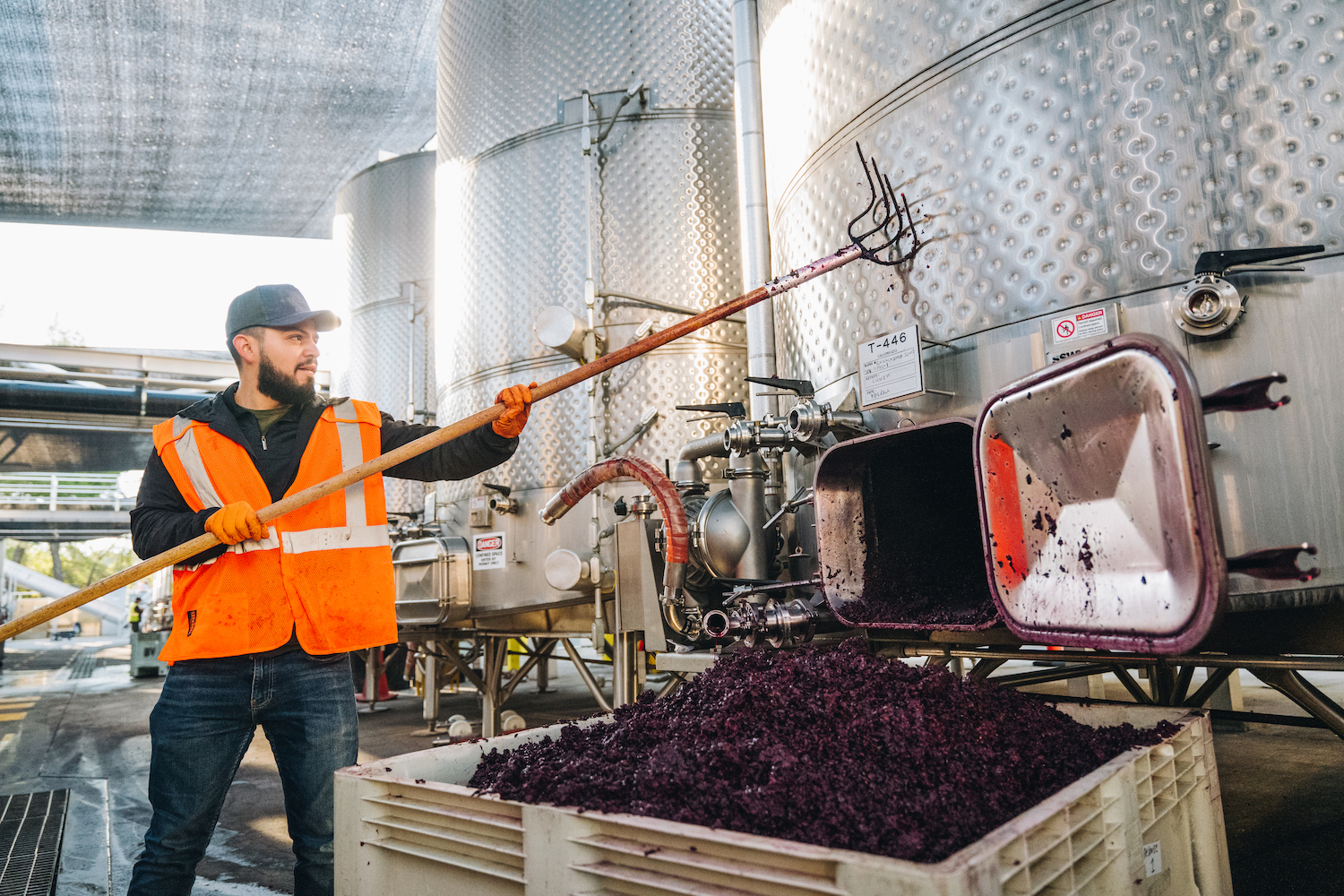
Putting climate change mitigation and sustainability to work
That doesn’t mean traditional viticultural areas are giving up on the grapes they’re known for. For example, Treasury Wine Estates has been working alongside the U.S. Department of Agriculture (USDA) in the Rutherford region of the Napa Valley to test whether biocharged soils could help in protecting against climate change. The process “locks carbon into the soil and improves soil structure,” Drayton said. “We combined that with compost for a healthy microbiome. We planted rows with it and without. In a heatwave, there was less loss with the biocharged rows.”
Heatwaves can also increase wine’s brix — or dissolved sugar — leading to problems with fermentation, higher than desired alcohol content, and the potential for unsavory sweetness from residual sugars, among other issues. But biocharging the soil reduced this problem, essentially buffering against a brix increase.
“It’s climate mitigation through carbon sequestration,” Drayton said of the process. And it’s just a small piece of Treasury Wine Estates’ sustainability program. “We’ve got some big goals,” he told us. Those goals include sourcing 100 percent renewable electricity by 2024 — for everything from refrigeration down to tasting rooms — and producing net zero carbon emissions by 2030.
The company is planning to achieve this by increasing solar usage, electrifying its fleets and tractors, purchasing renewable energy credits, buying offsets, and insetting — which, in the wine sector, involves using vineyards and land as carbon sinks. Energy usage has also been reduced through regenerative farming methods, such as using sheep and goats instead of tractors to mow down hillsides.
“We’ve got goals around packaging reuse and recyclability,” he added, as well as water stewardship and river restoration. The winemaker also recently worked with the U.S. Environmental Protection Agency and landholders in the valley to return the Napa River to its natural state. “We had to give up some land and cut back vines to do so, but it was worth it.”
Treasury Wine Estates and other like-minded winemakers see the value in being part of the solution — even if it costs a bit more and requires a little sacrifice, such as with the Napa River restoration. For those in viticulture, mitigating climate change is not only a best practice, but an imperative for the industry to continue to thrive.
Images courtesy of Treasury Wine Estates
Consumers Vote With Their Wallets as Secondhand Apparel Sales Boom


One in every three apparel items purchased in the U.S. last year was secondhand, according to the resale platform ThredUp, which has been tracking apparel resale markets for over a decade. As U.S. consumers continue to gravitate toward more sustainable products, over half shopped secondhand apparel in 2022, ThredUp found in its annual Resale Report.
Globally, the secondhand apparel market is set to nearly double by 2027, reaching $350 billion — including $70 billion in the U.S. alone. In the U.S. in particular, resale markets grew five times faster than the broader retail clothing sector in 2022, and global secondhand sales are expected to grow three times faster than the global apparel market overall. Brands are looking to benefit from rising consumer interest in secondhand shopping, with a record 88 brands launching resale programs in 2022.
"Now in its 11th year, the Resale Report has some of the most inspiring findings since we started the report in 2013," James Reinhart, CEO of ThredUp, said in a statement. "Resale is starting to blossom globally, with many of the largest retailers in the world adopting more circular business models."
The secondhand apparel boom comes as more and more people say they're concerned about environmental issues and are willing to change their daily lives to make a difference.
People are ready to change their lifestyles to save the planet
Over half of U.S. adults say they’ve already made lifestyle changes like shopping secondhand, purchasing products in reusable or refillable packaging, and buying less overall in order to reduce their impact on people and the planet, according to 2022 research from TriplePundit and 3BL Media. Another 2022 survey reveals the extent of climate anxiety among the public, with 1 out of 4 U.S. respondents worried they may have to give up long-term goals like starting a family.
Acting in their own lives gives people agency over global challenges — which can ease so-called "eco anxiety" and make people feel better. A 2019 study by Young Consumers, for example, indicates that people who buy less stuff for the sake of sustainability are happier in the long run. Short of simply buying less, consumers say they're willing to buy differently, and the shift toward secondhand apparel is only part of the broader reuse revolution taking hold across major market segments.
For example, nearly 75 percent of consumers have an interest in refillable products, while 86 percent of those under the age of 44 are prepared to pay more for a product if its packaging is sustainable, according to 2022 polling from Trivium Packaging. Refillable and reusable packaging sales are forecast to grow by 4.9 percent annually to $53.4 billion by 2027.
With those numbers, it's no surprise the trade publication Packaging World recently declared reusable and refillable packaging to be a "global opportunity" for the industry. Still, trends like these runs counter to preconceived notions that consumers don't really want or aren't really "ready" to change their lifestyles for sustainability reasons.
"When consumers are asked if they care about buying environmentally and ethically sustainable products, they overwhelmingly answer yes," McKinsey and Nielsen IQ found in a 2023 study focused on consumer interest in sustainability. Still, many brands cite lack of consumer interest as a key barrier in launching more sustainable offerings and point to sustainability-branded products that flopped and were later discontinued. In their report, the two organizations analyzed why that is, and largely found that the way brands communicate their sustainability credentials can make a big difference.
Resale offerings in particular offer a concrete and easily understandable way for brands to align with sustainability in a manner that stands out. More than half of Gen Z respondents to ThredUp's survey say they're more likely to shop with a brand that offers secondhand alongside new, up 6 points from 2021. And brands cited increased revenue and brand loyalty, alongside sustainability, as the top benefits they see from getting into resale.
Sustainability is a top driver of secondhand apparel purchases
Unsurprisingly, many Americans are reaching for secondhand apparel in response to the rising cost of goods, with 63 percent of respondents to ThredUp's survey saying they increased their spend on secondhand apparel in response to inflation. But sustainability remains a top driver, particularly among younger demographics.
In the average Gen Z closet, for example, 2 out of every 5 pieces are living a second life — and survey respondents in this age group cited sustainability as a top driver in making secondhand purchases. Nearly half (47 percent) of Gen Z respondents say they refuse to buy from non-sustainable apparel brands and retailers, up 11 points from 2021.
Their preference for shopping secondhand for sustainability is warranted: Buying and wearing secondhand clothing instead of new reduces carbon emissions by an average of 25 percent, according to ThredUp's Fashion Footprint Calculator — an interactive, consumer-facing tool launched this year alongside the report. If everyone bought one secondhand clothing item instead of new this year, it would save an estimated 2 billion pounds of carbon emissions, the equivalent of taking 76 million cars off the road, according to ThredUp's estimates.
Beyond the raw numbers, as awareness builds of the massive human and environmental cost of cheap fast fashion — ranging from dangerous and unfair labor practices, to microplastic pollution from synthetic fibers — it makes sense that more people are in search of other options that can still fit within their budgets.
"While value continues to be a key driver that motivates consumers to think secondhand first, global climate issues have increased awareness of resale’s potential to reduce fashion’s impact on the environment," Reinhart wrote in the opening of ThredUp's Resale Report. "We are still in the earliest days of inventing how resale can reduce the ongoing production excess in the apparel industry, and I don't see a world where we're going back to the way it used to be."
Image credit: 22Imagesstudio/Adobe Stock
How Brands Can Support Transgender Rights in the Age of Influencer Marketing
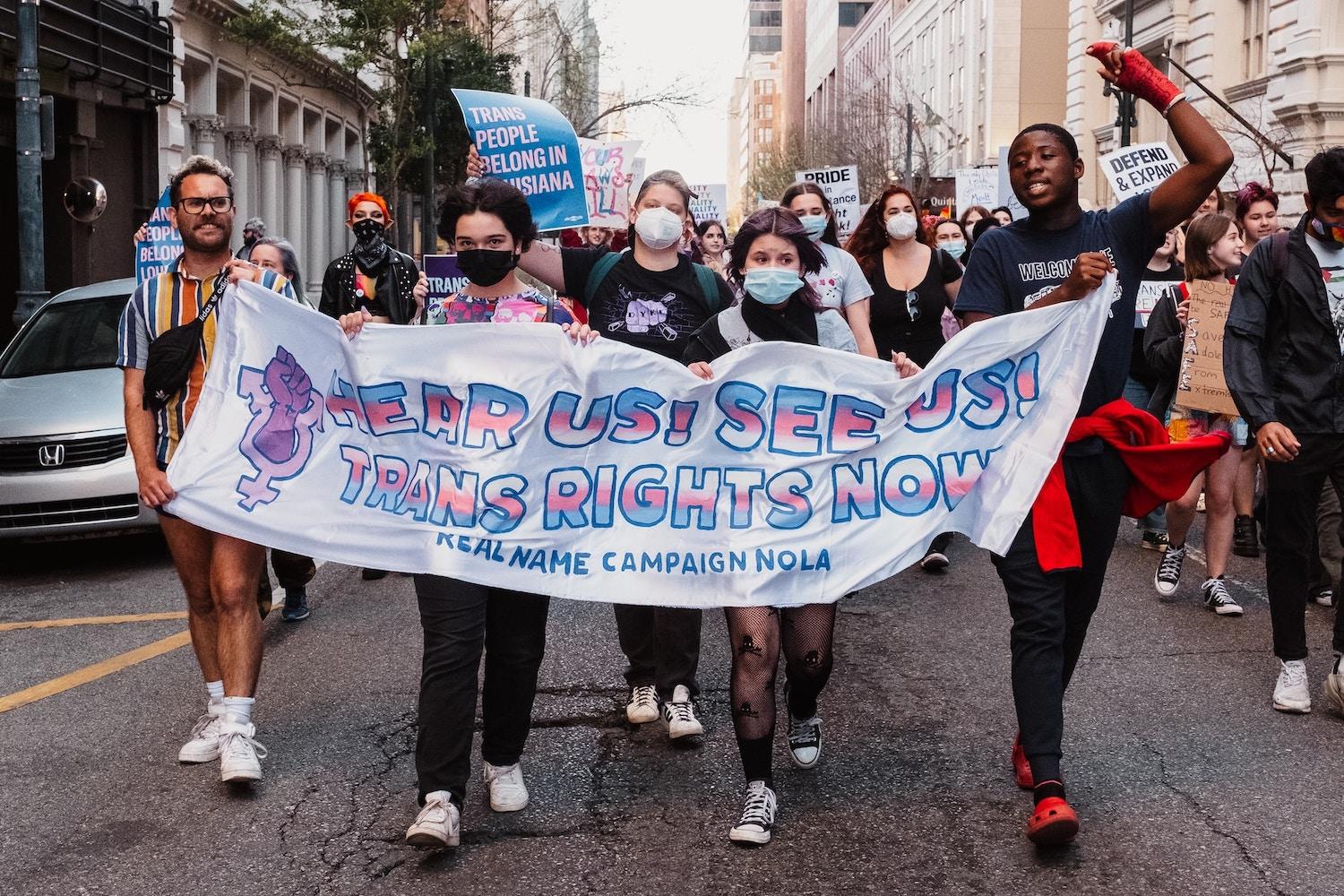
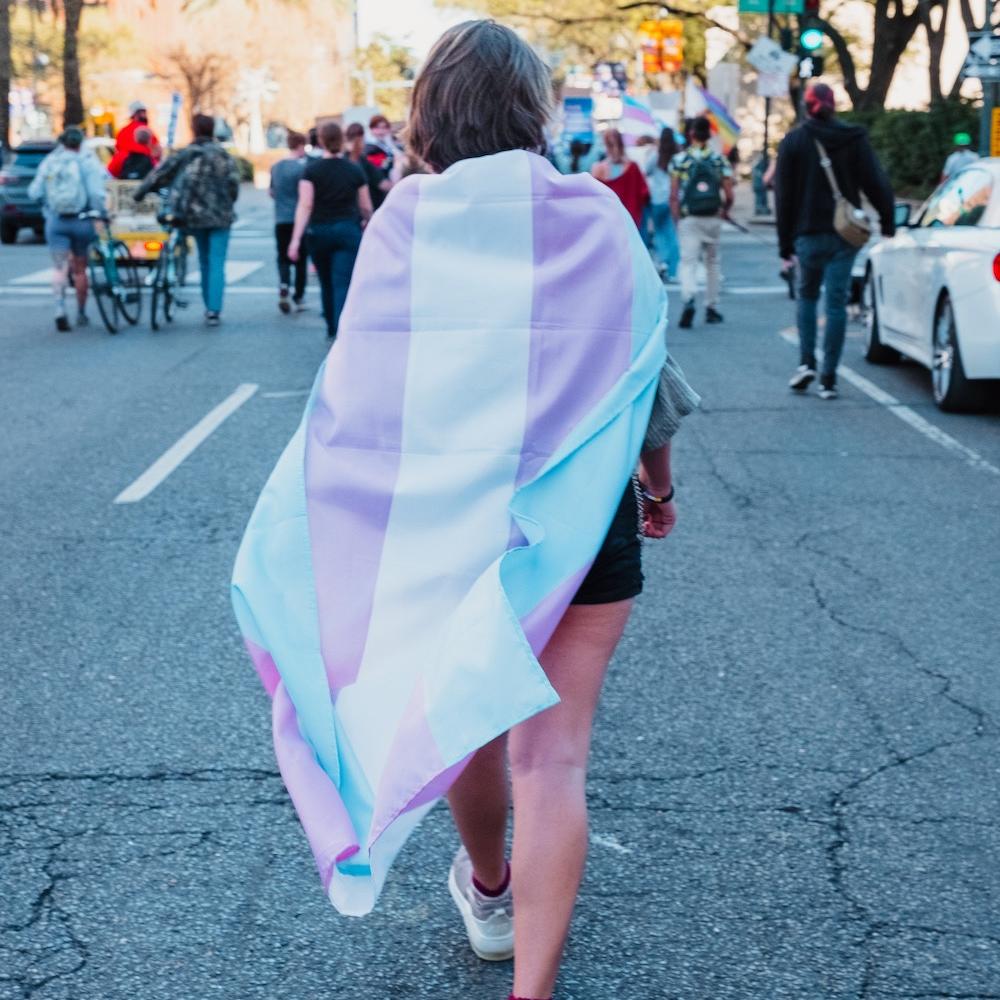
Locals take to the streets for a trans rights march in New Orleans last year.
Social media influencer marketing has opened up a vast new field of opportunities for brands to connect with consumers and build trust. With thousands of influencers from which to choose, brands can build on longstanding engagement efforts in addition to connecting with groups that might otherwise fly under their radar. Last week’s right-wing firestorm over Bud Light and the transgender TikTok star, actor and activist Dylan Mulvaney is a case in point.
A Bud Light can lights up the right-wing radar…
The match that lit the media flame last week was a Bud Light can bearing the face of Dylan Mulvaney, seen in one of her recent TikTok videos. The popular star has been chronicling her transition on TikTok for the past year, and Bud Light engaged her to support its new Easy Carry Contest promotion.
As described by reporter Samantha Riedel of the Condé Nast publication Them, Mulvaney has already worked with a number of brands including Ulta Beauty, Instacart and Kate Spade. Among other notable media exposures, last October she interviewed U.S. President Joe Biden about trans rights for the news organization Now This.
The backlash against Bud Light is not the first time Mulvaney has been exposed to online hate. Her high profile has made Mulvaney a regular target of online pundits and public figures who are known for transphobic rhetoric, including U.S. Rep. Marjorie Taylor Greene of Georgia and U.S. Sen. Marsha Blackburn of Tennessee, Riedel notes in Them.
However, Bud Light happens to be the top-selling beer in the nation. It is found in millions of refrigerators around the country, including those owned by anti-trans personalities. Bud Light’s Dylan Mulvaney can thus presented many of those anti-trans trolls with a unique and handy opportunity to act out their hatred in public by circulating videos of themselves destroying their own stashes of Bud Light.
…and hilarity ensues
In one widely reported example, the singer-songwriter Kid Rock circulated a video of himself shooting at cans of Bud Light. That cartoonish act of violence has more ominous echoes in the rise of anti-trans hate incidents and a fresh torrent of anti-trans state laws. In addition, Rock is known for his affinity with former U.S. President Donald Trump, who has adopted an anti-trans agenda in his latest campaign for the Oval Office.
Other reactions to the Dylan Mulvaney can simply provoked ridicule. In particular, the country-western singer Travis Tritt circulated a video of himself replacing cans of Bud Light with cans of Coors in his refrigerator. However, social media users were quick to clap back with images of Pride-themed Coors cans from Molson Coors’ “Tap into Change” campaign. Some bartenders have also reported that their customers are protesting the Dylan Mulvaney can by switching from Bud Light to Coors, though so far those appear to be anecdotal stories.
Anti-trans drinkers may want to check their beer fridges and liquor cabinets before circulating any more Bud Light destruction videos. Plenty of other brewers have featured LGBTQ personalities in their ad campaigns, including Miller Lite, Heineken and Brooklyn Brewery. Jack Daniels has also launched an entire Pride campaign around its Jack Fire brand.
Everything old is an outrage again
The simple fact is that LGBTQ beer-drinkers are an influential consumer demographic that has caught the attention of Budweiser, Coors and other companies for decades as part and parcel of their efforts to beat the competition.
Slate reporter and author Allyson P. Brantley adds an interesting historical element to the story. According to her research, Molson Coors began to focus on engaging LGBTQ consumers in the 1970s after the company learned that striking Coors workers gained support from the LGBTQ community in San Francisco, which launched a boycott.
Despite efforts to engage with LGBTQ beer-drinkers, Coors’ affiliation with right-wing causes continued to fuel the LGBTQ boycott of the brand into the 1990s. The company has stepped up its LGBTQ support even more since then, though Brantley observes that the tendency to stay away from Coors still lingers among LGBTQ drinkers. That could explain why Tritt and other anti-trans personalities thought it would be a particularly significant gesture to replace their Bud Light with Coors, rather than another brand.
“Bud Light — as well as Coors, Miller and other competitors — now market openly and creatively to queer consumers because they have long been a source of both protest and profit,” Brantley concludes in Slate. “Whether these efforts are genuine or not is another matter.”
That just about sums it up. Bud Light's parent company, Anheuser-Busch, pushed back against the anti-trans critics in a statement last weekend to the Associated Press. The company explained that it “works with hundreds of influencers across our brands as one of many ways to authentically connect with audiences across various demographics.”
Next test for brands on trans rights
The beer cans in question were a commemorative gift to Mulvaney and not intended for sale to the general public, Anheuser-Busch told the AP. That’s too bad. Millions of beer-drinkers might like to buy a Dylan Mulvaney commemorative beer can for display, if not to drink the contents.
In the meantime, brands are facing another test this week at the upcoming Possible conference in Miami Beach. The event is sponsored by the A-list digital marketing association MMA Global, and it prominently features an on-stage interview with Tesla CEO and Twitter owner Elon Musk.
The speaking engagement comes as Musk faces increasing scrutiny over his anti-trans statements on social media and in person. Among other issues, Musk also allied with Trump to muddy the waters over COVID-19 protection in the early months of the pandemic, his Tesla brand has taken a hit over charges of racism at its Fremont, California factory, and he has become an outspoken critic of the ESG movement, in addition to acquiring a reputation for tolerating or even encouraging anti-trans rhetoric and other hate speech on Twitter.
“Musk is slated to speak on April 18 at the Possible conference from MMA Global, the premier digital marketing association,” Max Tani of the news organization Semafor reported. “He’ll be interviewed by NBCU ad chief Linda Yaccarino and make the case that advertisers — who have abandoned Twitter because they don’t believe it’s a safe place to advertise — should return.”
Keeping Musk at arm’s length is just one challenge the MMA conference poses to brands. Another is the location of the event in Florida, where Gov. Ron DeSantis has been front and center in the movement to dehumanize and criminalize transgender persons and limit trans rights.
The MMA conference could provide attendees with an opportunity to take a strong, public stand in support of trans rights and human rights, as Disney has recently done. However, that remains to be seen.
Image credit: Aiden Craver/Unsplash
How Northwestern Mutual’s Decade-Long Business Case for DEI Challenges the Industry Status Quo


Recently there has been a troubling downturn in diversity, equity, and inclusion roles and programs as companies begin to divest from these efforts due to looming market trends following the sharp increase in similar programs in 2020. However, there are companies that continue to accelerate their diversity efforts despite the current landscape. Financial services company Northwestern Mutual saw the importance of DEI long before corporations pledged to make it a priority in 2020 — launching the first iteration of its companywide diversity and inclusion (D&I) roadmap over a decade ago.
“There is so much data available to demonstrate that the companies that are more diverse perform far better than the companies that are not,” Grady Crosby, vice president of enterprise Environmental, Social, and Governance (ESG) at Northwestern Mutual, told TriplePundit. “For us, having a diverse and inclusive culture is a business imperative. It’s foundational to what we do.”
Northwestern Mutual’s D&I roadmap seeks to ensure that diversity, equity and inclusion are woven throughout the company’s operations as a pillar under its wider ESG and social impact work. That includes representation, recruitment and retention of every kind of talent, as well as philanthropic strategies, socio-economic investments, employee resource groups, external supplier relationships, and more, Crosby said. The company has since reached the third stage of its roadmap in which it’s looking to become a “recognized leader” in diversity and inclusion. That means having a positive impact in communities, influencing the marketplace and creating a world-class culture of belonging for its people.
“As an insurer for 166-years, Northwestern Mutual is known for delivering on very long-term promises and being there when people need us most,” Crosby said. “To deliver on those promises, we need to make sure our employees can thrive in the organization and that they’re in an environment where they can continue to advance in their careers and contribute to our company and community in an equitable and meaningful way.”
That also requires the company to look toward the communities outside its doors, he added. For the last 10 years, Northwestern Mutual has been working on social justice initiatives through its neighborhood revitalization work. In 2021, the company announced a $100 million impact investing fund to deliver on the company’s commitment to address inequality and the racial wealth gap in the U.S.
The fund directs investments to communities of color both locally in the Milwaukee, WI area, home of the company’s headquarters, and nationally. The investments focus on physical and social infrastructure, healthy and sustainable neighborhoods, and access to capital for individuals and businesses. To date, 45 businesses have benefited from the investment fund, and another 63 are expected to receive support in 2023.
“Although we are in the early stages of our investments, we know these investments will have a long-term, tangible impact on job creation, wealth creation, expanded access to services such as healthcare, eliminating food deserts and building affordable housing, for example,” Crosby explained. “All of that information is going to continue to be aggregated over the life of these investments so, as these investments mature, we’ll be able to report out even more real impact data, which we’re really excited about.”
The idea for the fund originated from the company’s Sustained Action for Racial Equity (SARE) task force, which is headed by chairman, president and CEO John Schlifske. Schlifske’s direct involvement reflects a commitment to diversity and inclusion that starts at the top.
“Leadership is key to the long-term success and flow-down adoption of your D&I strategy across all levels of the organization — they need to message it, show up to the events, lead the meetings, demand to see the data each month, hold leaders accountable, and drive the results over the goal line year after year,” said Amy Hanneman, vice president of diversity and inclusion at Northwestern Mutual. “Our CEO and senior leadership are committed to this long-term, as evidenced by D&I being front and center in our goals and how we invest in our people and communities.”
Northwestern Mutual’s website includes a 2020 statement on its commitment to “diversity and addressing racism” signed by senior leadership, as well as members of the SARE task force, employee resource groups, field advisory groups and other stakeholders.
“We are a stronger company because of the value we place on inclusivity and the behaviors we exhibit to advance it,” the statement reads. “We know we have work to do and we are committed to continuously getting better, not only because it is the right thing to do, but also because it is the promise we make to our people and to our clients. It is clear that inclusivity and equity are neither uniformly respected nor applied to all people across the communities in which we live and work, and that racism continues to divide our country. This is not a political
issue — this is a human issue. As such, we cannot and will not be silent in the face of such injustice.”
Putting those words into action means staying humble and listening to both employees and communities, said Hanneman. “Our people know what’s going on and what needs to be addressed,” Hanneman told us. “When your people feel heard, and more important feel like what matters to them matters to the company — everybody wins.”
Northwestern Mutual’s success in encouraging the development of an inclusive internal culture also stands to benefit the business long-term in the form of attracting and retaining talent. “Inclusion drives better everything — better attraction and retention of our people, a stronger, legitimate brand that represents the diversity of our clients — all of this impacts our bottom line,” Hanneman said. “It’s no coincidence that our most profitable years have also been our most diverse, where we’ve had our highest numbers of women and people of color in our history, especially in leadership roles. That’s how we’ve gotten here and we’ll stay here by focusing on the power of our inclusive culture, our people, and the people we serve.”
This article series is sponsored by Northwestern Mutual and produced by the TriplePundit editorial team.
Image credit: Kampus Production/Pexels
Social Enterprise Transforms the World's Most Wasted Plastic Into Sunglasses
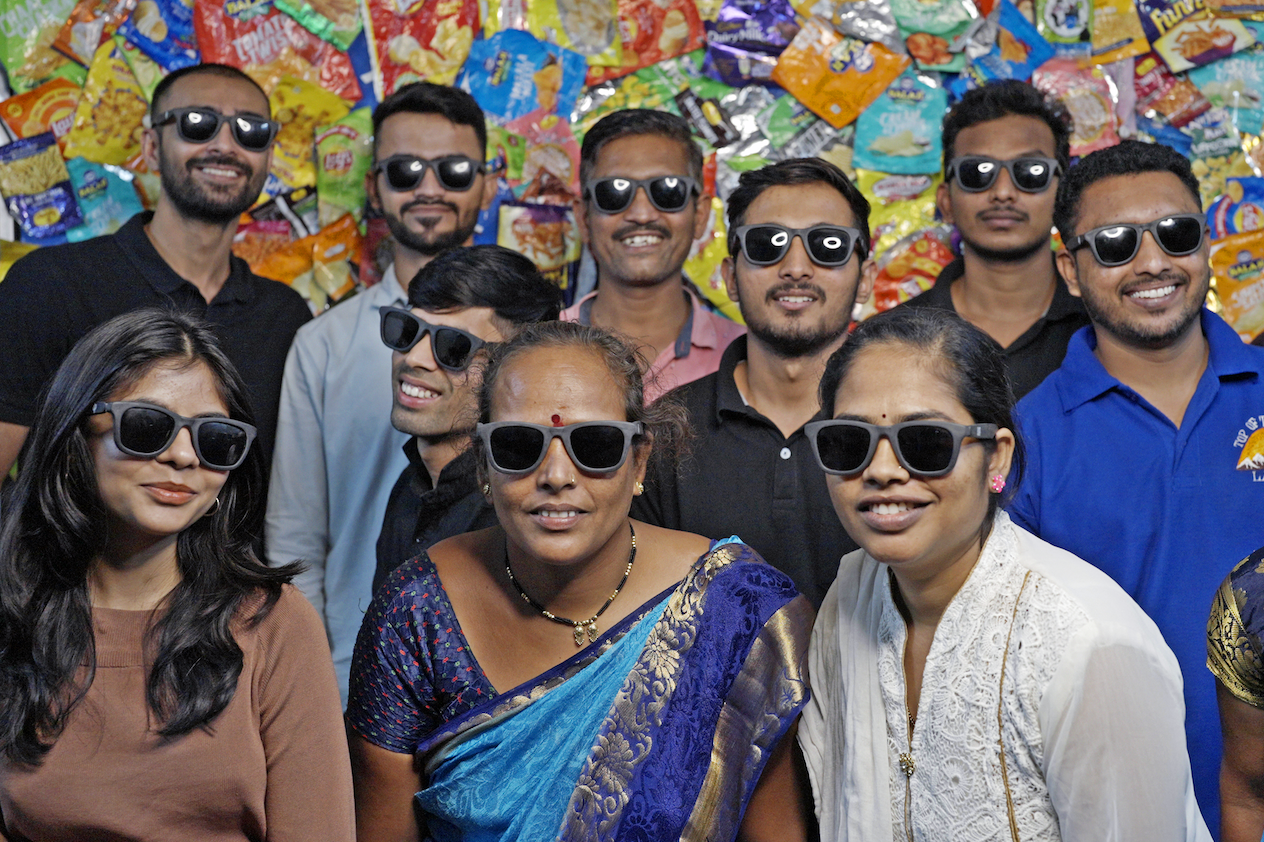
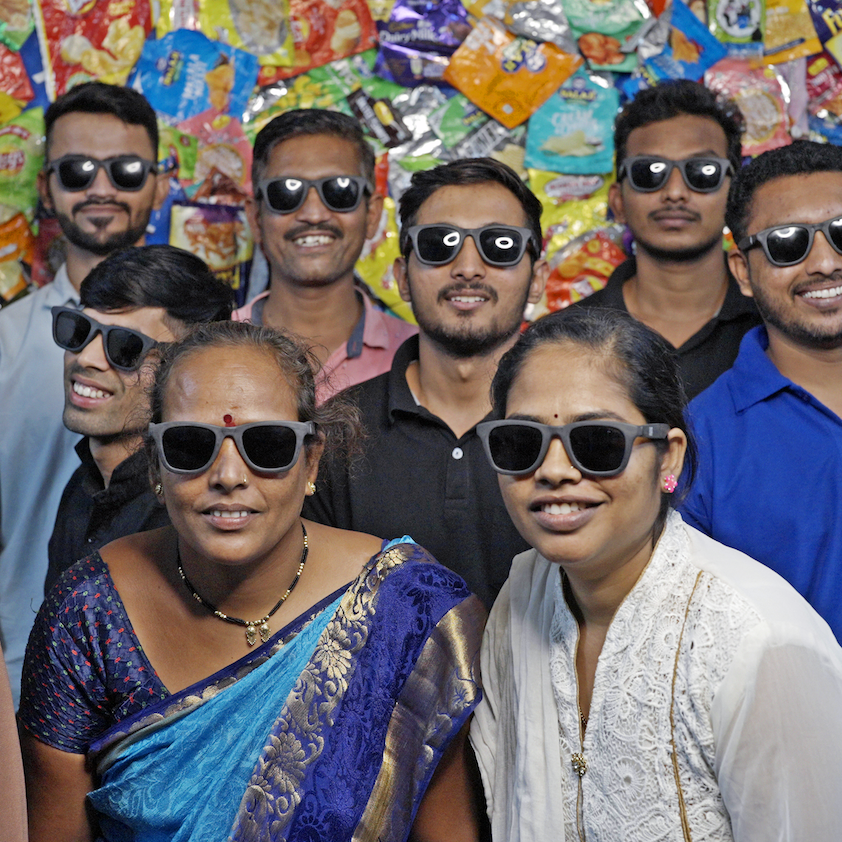
Founder Anish Malpani (back row, far left) and the Ashaya team model the startup's first proof-of-concept product, a pair of sunglasses made from recycled chip packets.
In a world where flexible packaging is everywhere and hardly any of it is recycled, a small social enterprise in India — founded by none other than my little brother, Anish Malpani — says it has cracked the code.
Flexible packaging is almost uniformly single-use and is the most challenging market segment to address toward realizing a circular economy for plastics. Due to its low weight, low cost and high functionality, flexible plastic packaging is used for almost everything — fresh fruit, meat, dry food, confectionary, drinks, personal care products, stationery items, tools, electronics and more — making it the fastest growing category of plastic packaging.
Launched two years ago, Ashaya is a social enterprise based in Pune that has managed to recycle this hard-to-recycle, multi-layered plastic packaging (MLP) into high-quality material.
“We are recycling post-consumer metalized multi-layered plastic packaging (MLP) — i.e. packets of chips, chocolate wrappers and so on — unfiltered. As in, we don’t pick and choose what MLP to recycle — we recycle all of it,” says Anish, founder of Ashaya.

Recycling what’s impossible to recycle
Globally, near 0 percent of flexible packaging is recycled. In other words, practically none of it. This is because flexible packaging results in a low-value, high-volume composite waste — containing up to five or six different materials — that is considered economically and technically to be nearly impossible to recycle. It ends up in landfills and accounts for a disproportionate share of leakage into the ocean worldwide.
“Eighty percent of all leakage into the oceans is flexible packaging," Anish says. "We’ve found a way to extract materials from this packaging and upcycle it into high-quality, largely consistent materials and products that are more recyclable than the original chip packet. The material properties we have been able get are almost virgin-like, and its applications are boundless."
Ashaya's team has spent the last two years experimenting in their lab in Pune and has found a way to not only recycle flexible packaging, but also reinvigorate it. They chemo-mechanically extract materials from this waste using a patent-pending technology and use those materials to create sunglasses, the company's first proof-of-concept product. Each pair of sunglasses is made of five chip packets.
“These will probably be the most sustainable products you’ll own, both environmentally and socially," Anish says. "They’re also highly functional as they are comfortable to wear; light and won’t break even if you drive a car over them!”
Going to the consumer goods market to start with was a bold move. “We were able to go to the consumer market because we have complete vertical integration of our operations — from shredding the waste, to cutting the lenses of our sunglasses, to selling them on our website,” Anish explains. “This has proved to have more benefits than we imagined. It has enabled us to minimize dependencies on external stakeholders, allowing us to trot along no matter what happens.”
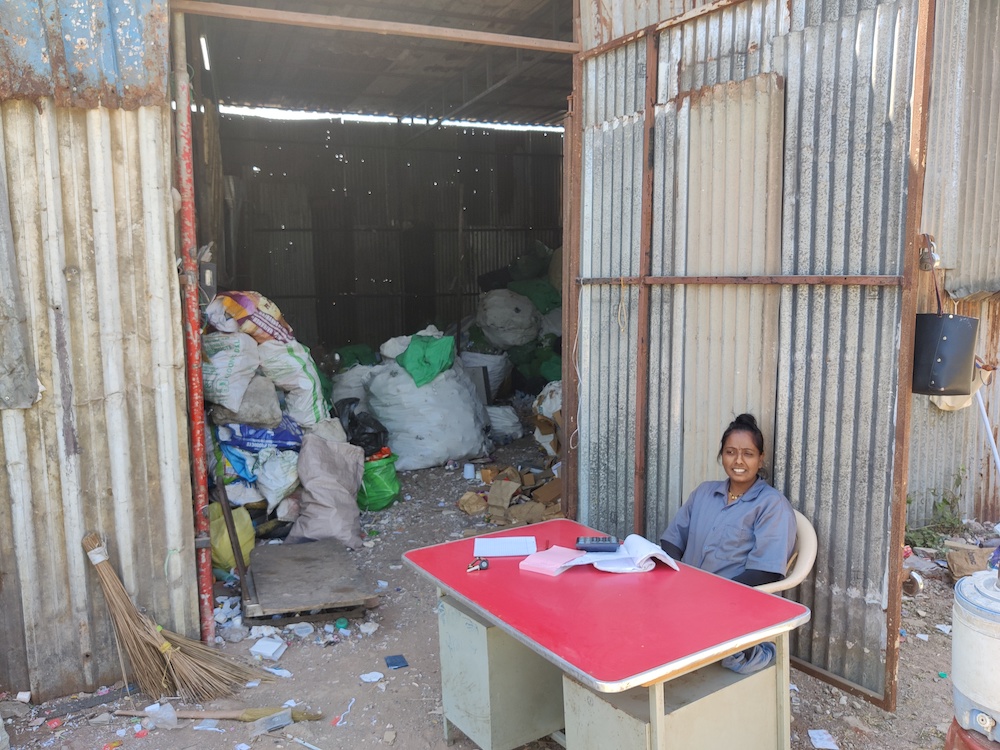
Owning the supply chain: From trash to market
What's more, Ashaya has hired its own waste pickers in Pune so the company owns the entire supply chain, from trash to market.
“We buy waste directly from waste pickers and pay a premium for it," Anish says. "Most importantly, we formally incorporate them into our supply chain. We have hired five waste-pickers so far part-time, whose monthly income has increased by an average of 120 percent."
It is estimated that India generates 65 million tons of waste each year and is home to more than 4 million informal waste pickers who are marginalized and at the bottom of the socio-economic chain. Ten percent of Ashaya sales go toward keeping the children of waste pickers in school to assist them in breaking out of the poverty cycle.
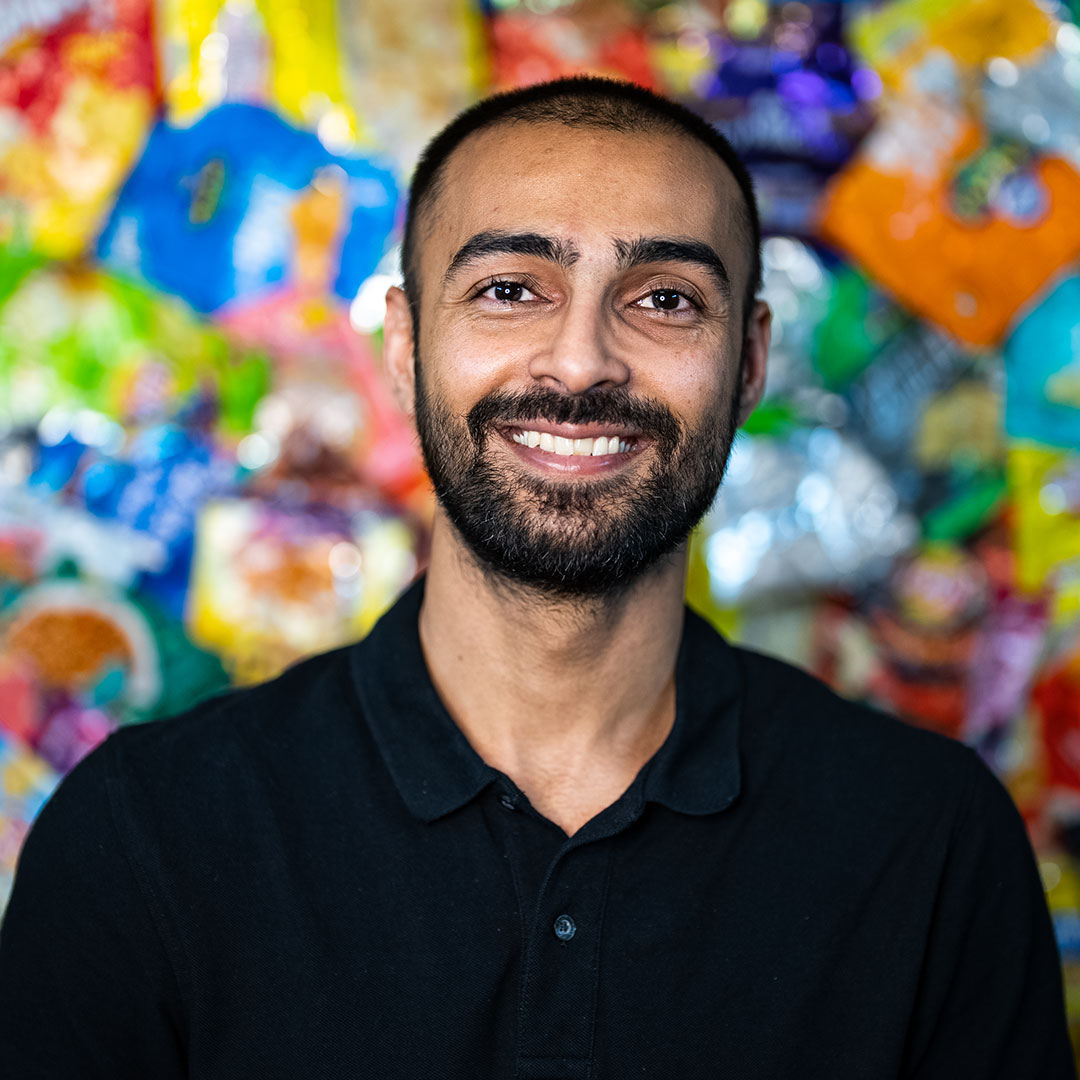
Contributing to circular economy for plastic
To create a circular economy for plastic, we must eliminate the use of unnecessary plastic and innovate to make the plastics we do need recyclable, reusable or compostable.
Ashaya is able to do all of this. By recycling and repurposing flexible packaging that has long plagued the environment, the company is not only creating a more sustainable world, but also transforming the lives of some of India's most underrepresented people.
The long-term goal for Ashaya is to scale the quantity of material it can produce. “We are still tiny," Anish says. "We have two small labs in a space of 1,200 square feet, so we cannot do large volumes. No one wants to buy 10 kilograms of material, they want 10 tons. At our current rate of production, that would take us 10 years. Our next step is to raise funds to take our technology from a micro-pilot plant to a full-scale pilot plant to demonstrate the viability of what we are trying to achieve.”
I personally think my brother’s story warrants a film: Indian boy quits high-flying career in Manhattan to move back to India and make a change. Not the Bollywood kind! A documentary series of his journey from being a finance director at a radio station in New York to finding his purpose as a social entrepreneur in India. Although he launched his company two years ago, it took him five years before that to find his calling whilst he travelled the world working in social enterprises and NGOs in Guatemala, Kenya and India.
I am so proud to see my brother evolve into a true innovator, entrepreneur and social champion who has chosen to dedicate his life to address some of the world’s most pressing challenges.
Images courtesy of Ashaya